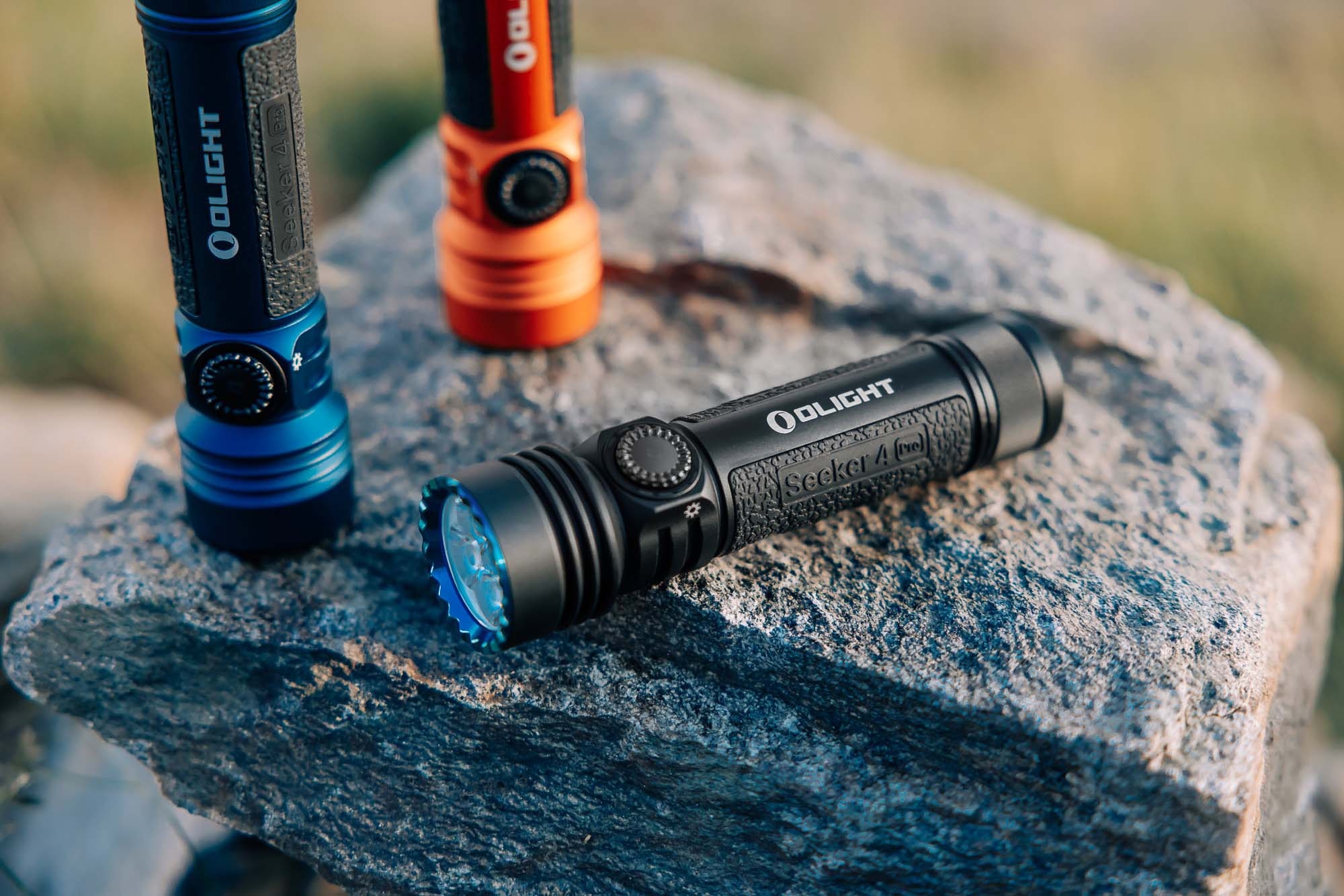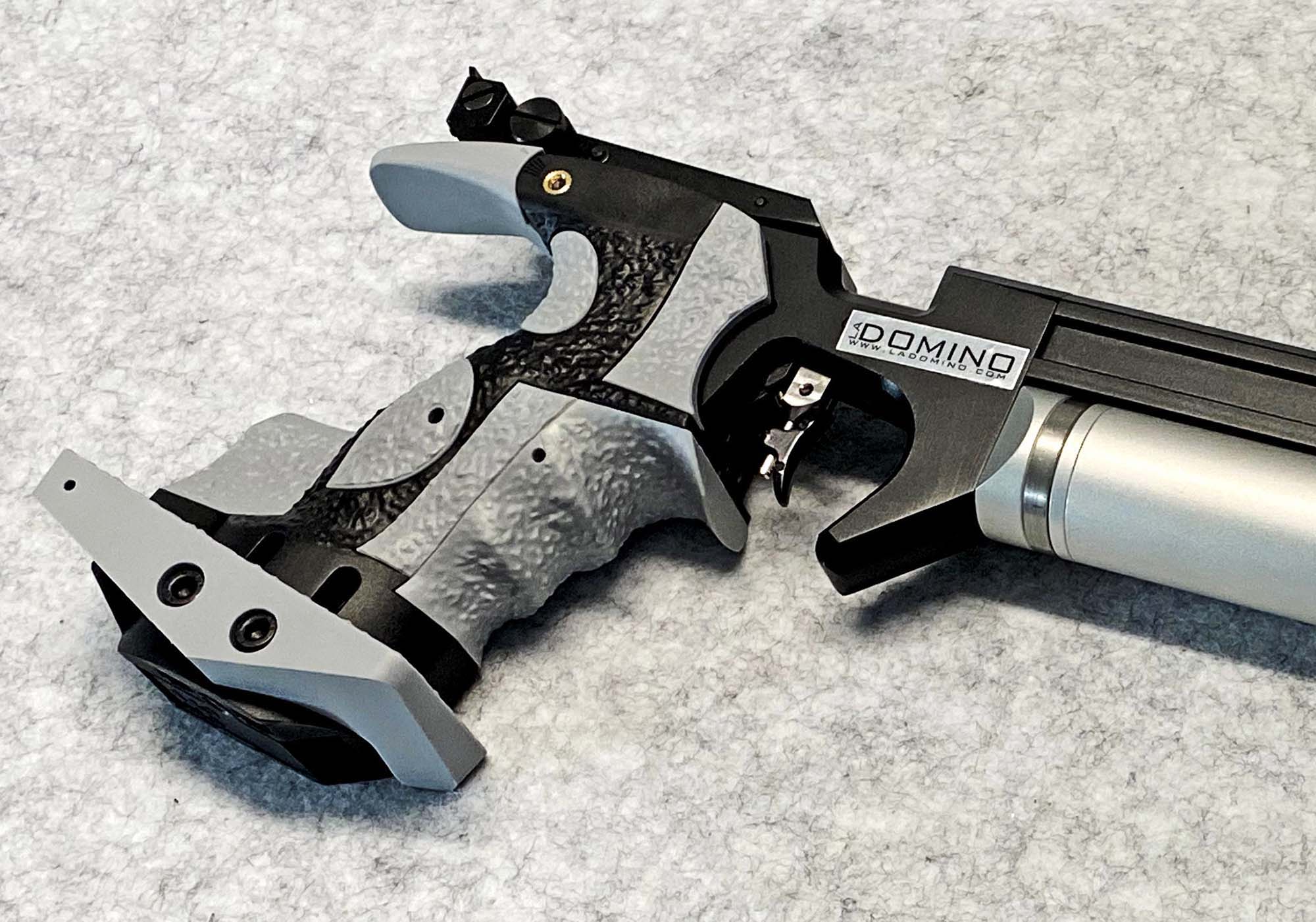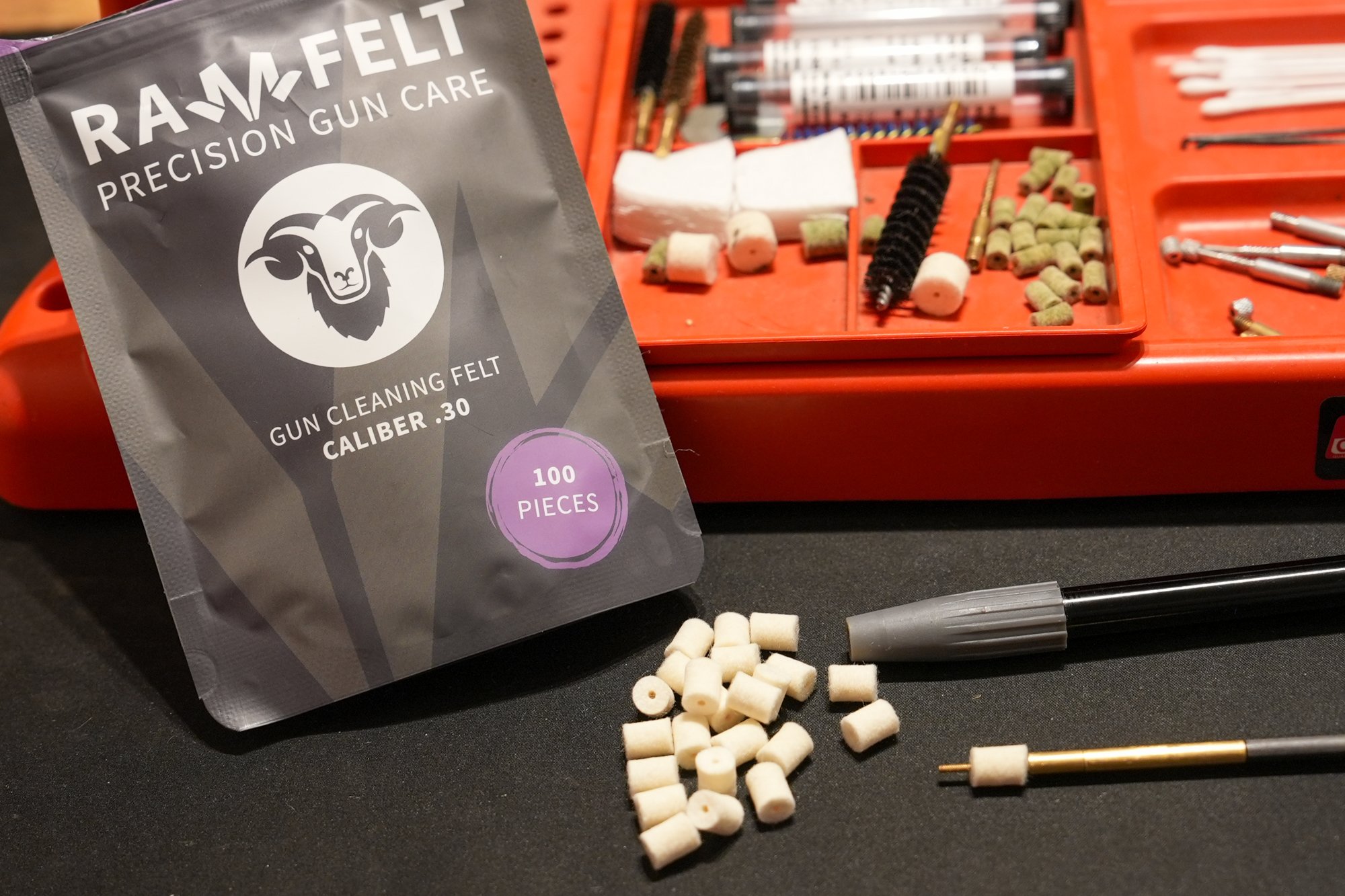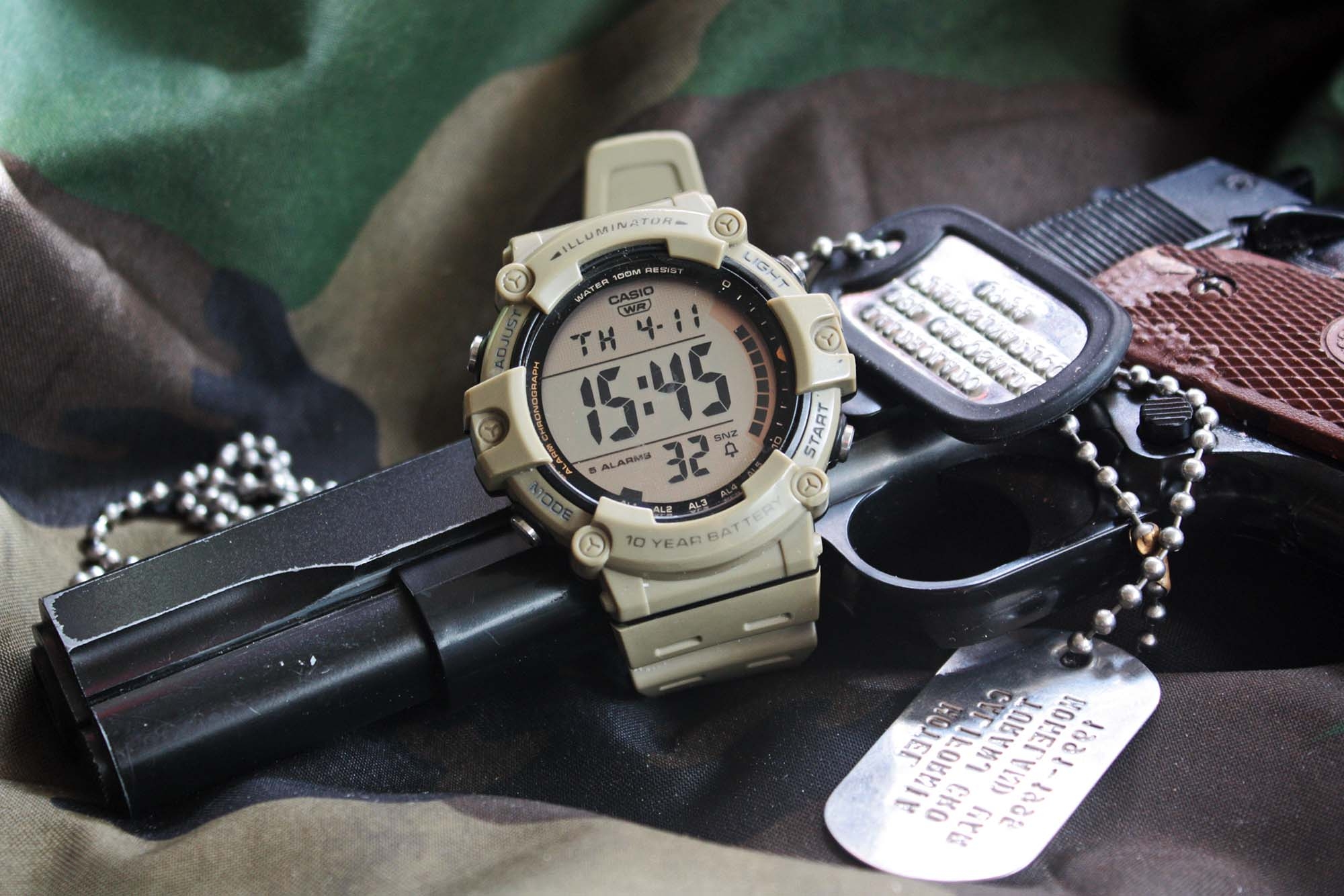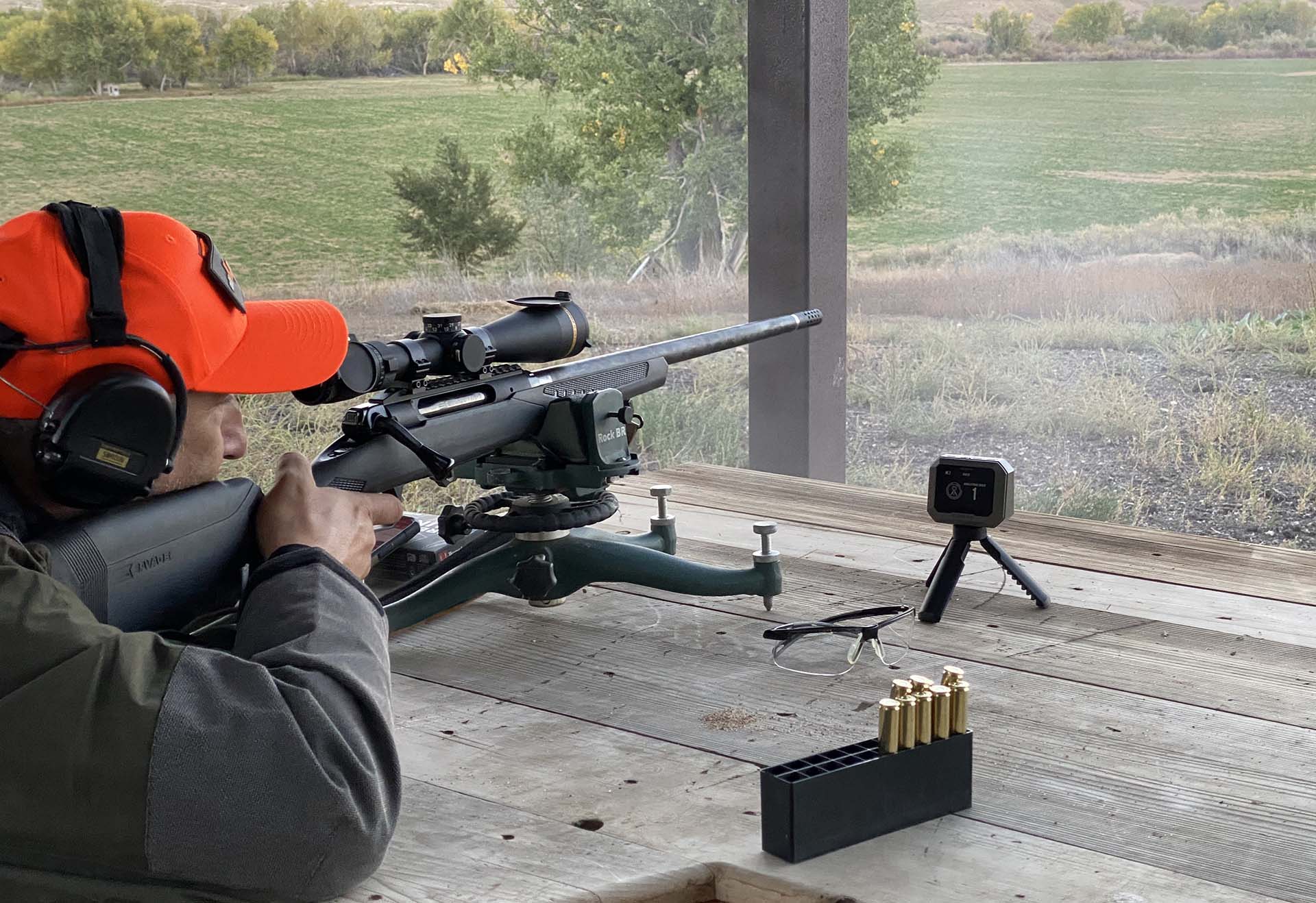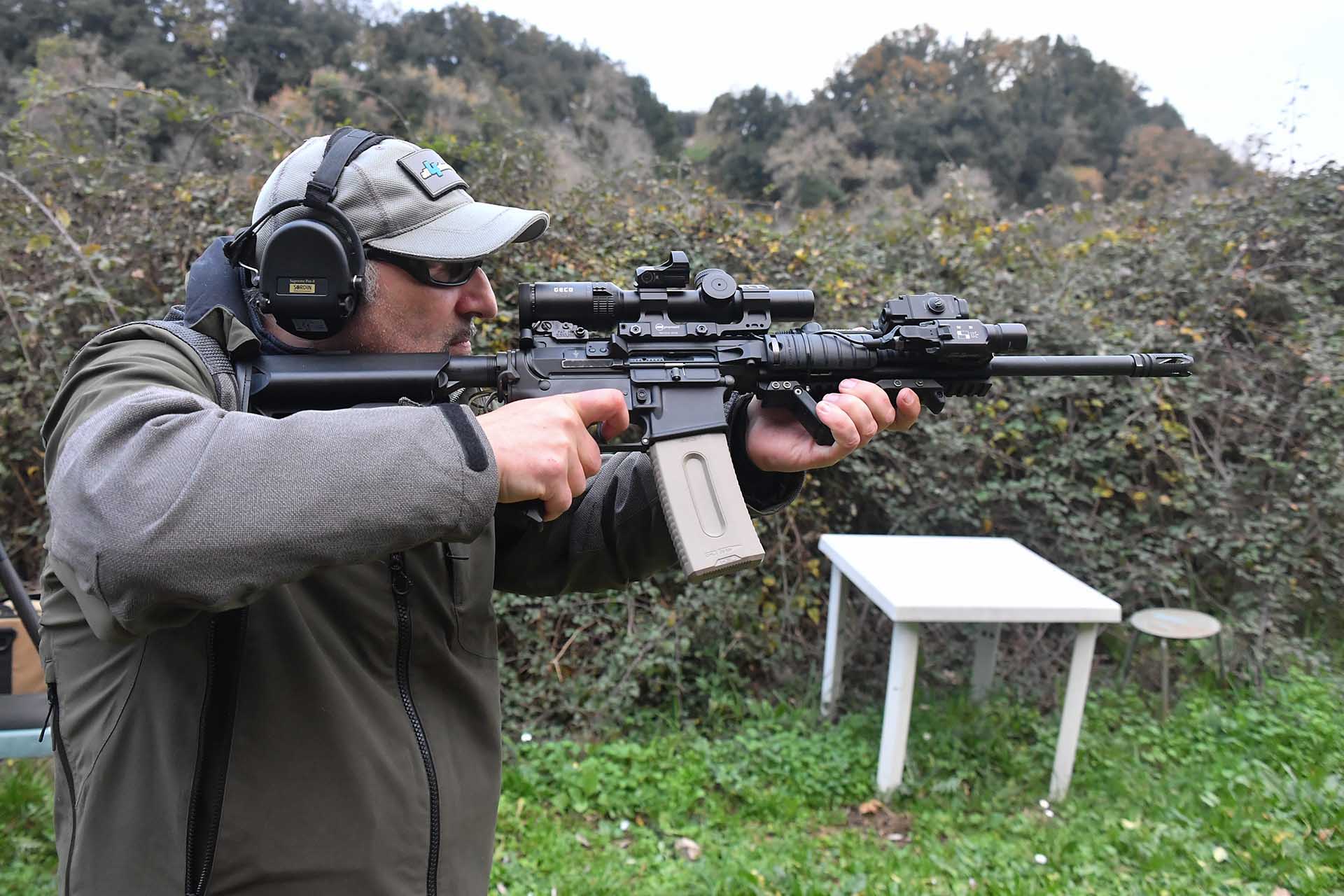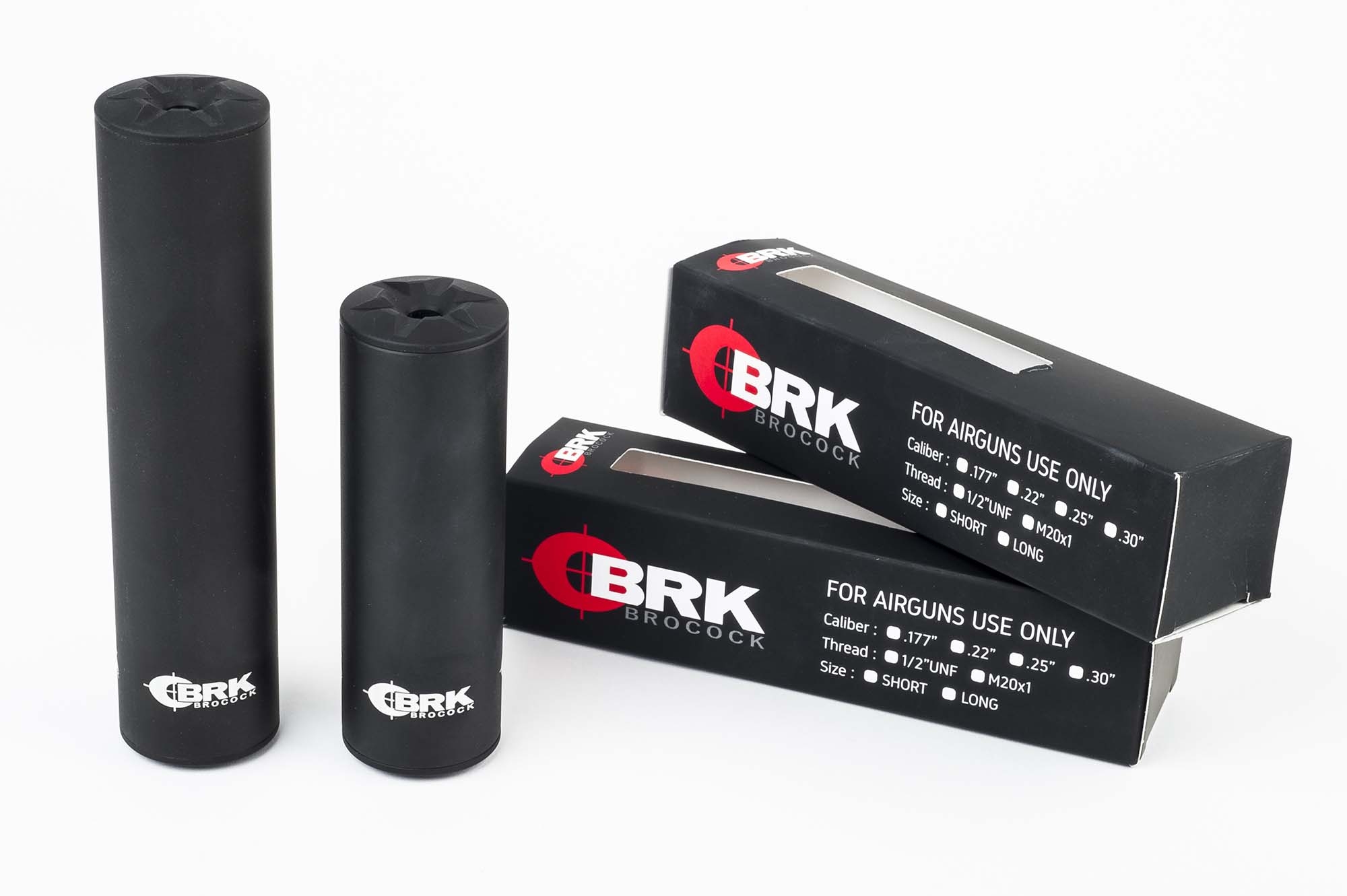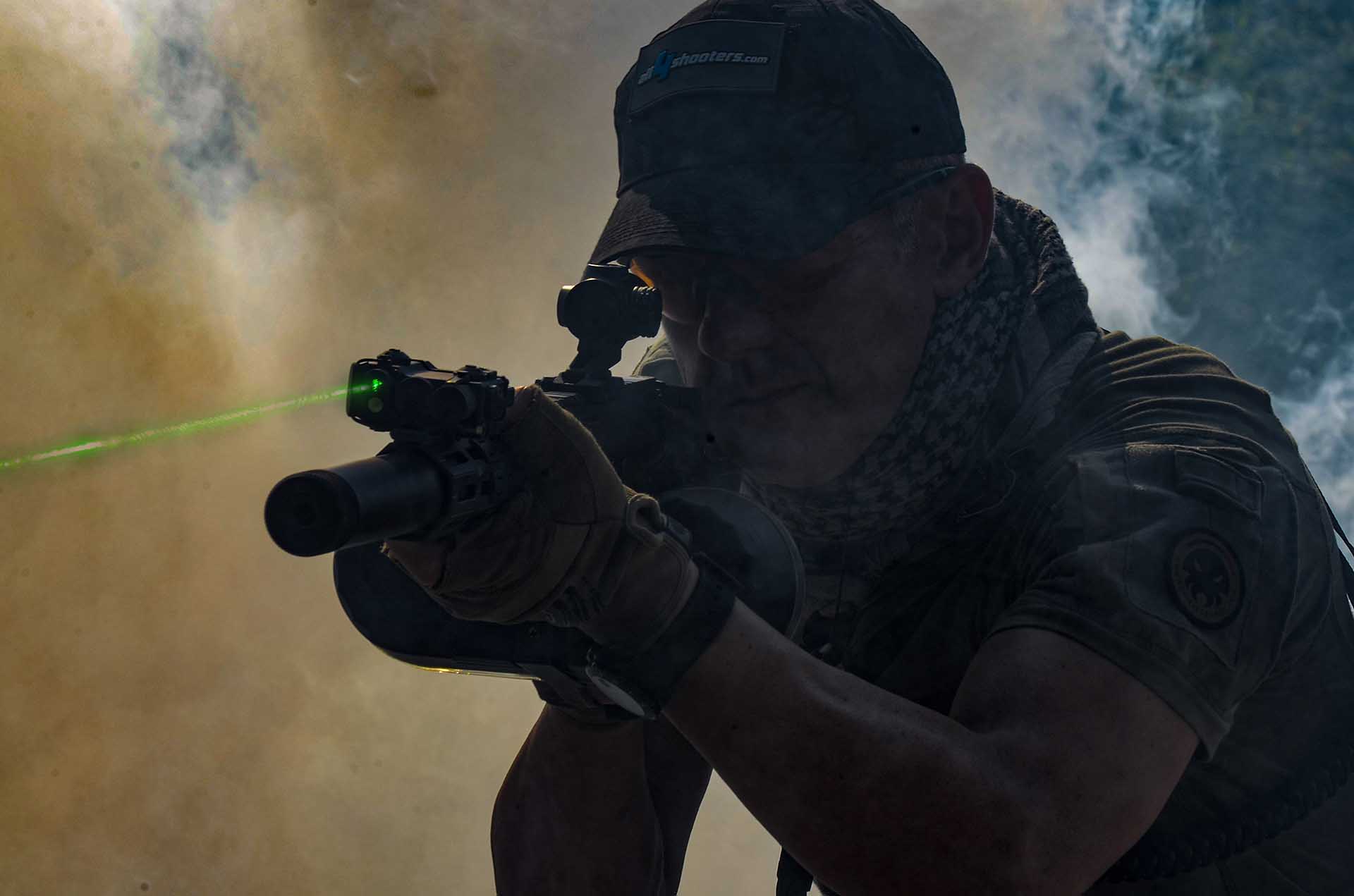The trend comes from the USA. Accessories and equipment that have proven their worth in the military and law enforcement sectors or in competitive sports are now also frequently finding favor with young and open-minded hunters. This ranges from clothing and optics to gun mounts and rests. As a result, many hunters are now leaving the tried-and-tested stick in the corner and prefer to use modern target sticks or so-called shooting or rifle tripods, as they have been used for some time, especially in dynamic long-range shooting. The following test report is about just such a tripod.
The technical features of the KJI K800 CF rifle tripod
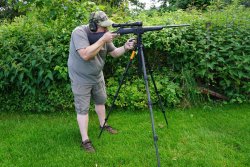
At first glance, the KJI K800 CF is reminiscent of a high-quality tripod from the professional photo/video sector. This is hardly surprising, as it is just as important to have a "shot" that is as steady and wobble-free as possible as it is for hunting and shooting sports in general, and especially in the military and law enforcement sectors. This is precisely where the US company specialising in gun tripods and mounts has its origins. KJI was founded in 2012 by two professional gun carriers who recognised the need for gun mounts and tripods that provide the shooting stability that law enforcement, military and sporting precision rifle shooters require for their purposes. And yes: this also makes sense for hunters, especially if the equipment is light enough. But more on that later. KJI was acquired by Sellmark in 2019. KJI products are now also available to European wholesalers and specialist retailers via their Bulgarian distribution partner Zarimex. The new owner Sellmark has set itself the strict goal of continuing to manufacture and develop high-quality tripods and gun mounts for the KJI brand in order to improve precision when shooting with rifles and to counteract signs of fatigue in shooters and hunters.
What are the benefits of a lightweight tripod for hunters? How much does the KJI K800 CF cost? And what is a Reaper Grip?
Questions upon questions, which we would like to clarify step by step. The KJI K800 CF is a particularly lightweight tripod designed for professional use. The legs are each divided into four tubular segments, which are also made of extremely light, yet very stable and torsion-resistant carbon fiber composite material. This is where the abbreviation "CF" for carbon fiber in the model name of the KJI K800 comes from.
The leg segments consist of telescoping tubes that are held in place by plastic flip locks. The clamping force of the plastic flip locks can be adjusted using an Allen screw. In our test sample, the legs fell out completely by gravity alone after releasing the locks. It was also sufficient to hold the tripod upside down with the locks open to retract the legs completely. Of course, this was only possible when the legs were folded in and not when they were spread wide apart.
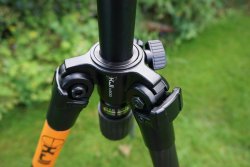
The interfaces of the tripod legs on the main body each have three predefined angle settings. These are around 25°, 50° and 72°. Both the main body and the hinges are made of an aluminum alloy. In the 25° position on a horizontal surface, the tripod height to the base plate is initially 1,286 mm. The total height can be increased to around 1,600 mm by extending the center column. If you unscrew the weight hook at the lower end of the center column, you can extend the aluminum tube by a further 25 mm to reach the manufacturer's specified maximum height of 1,625 mm. If required, the KJI K800 CF can be used as a kneeling tripod or even as a prone tripod with a minimum height of just 190 mm (plus gun mount). For prone use, the legs of the tripod must then be spread out at the maximum angle and the lower end of the two-part extendable center column must also be unscrewed. With the legs fully retracted for transport, the pack size shrinks to 502 mm. KJI also supplies the matching transport bag.
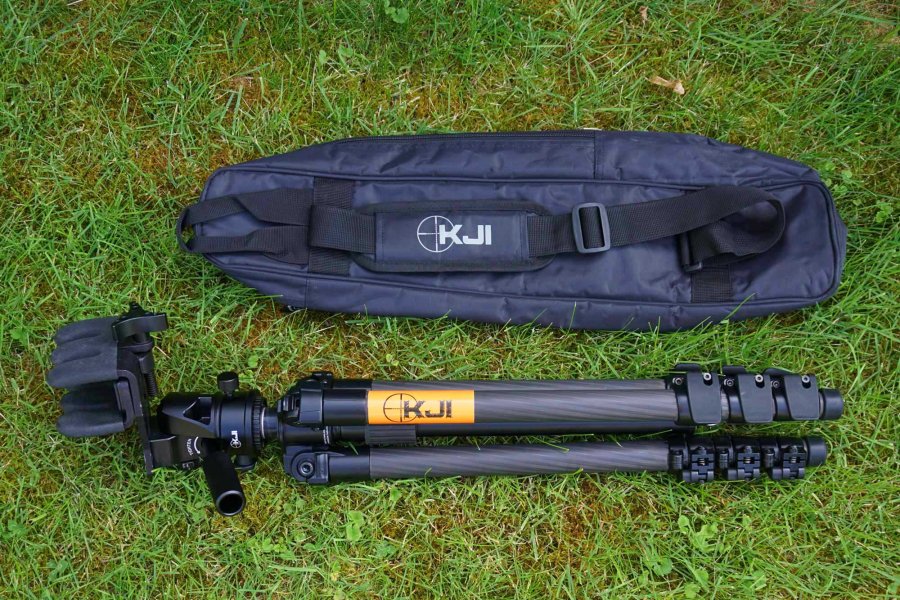
Speaking of weight hook: the test tripod itself weighed 1,725 g on our package scales and, according to the manufacturer, is optimised for a load of 9 kg. In the test, however, the KJI K800 CF made a very solid impression, so that the manufacturer has certainly added a good portion of safety margin here and the hunter does not have to be afraid when he puts his/her rifle equipped with scope and attachments and also a tripod head with a robust gun rest on top. And even if you hang your hunting rucksack on the hook at the bottom to weigh the whole thing down, there should be no problems, as the total load capacity of the tripod is specified at around 45 kg.
In terms of price, the tripod is clearly in the premium segment with an RRP of 479 euros. Then there are the costs for an appropriate gun mount. Of course, the manufacturer is aware of this and offers the KJI Reaper Grip as a set with the KJI K800 CF. The RRP for both parts together is 749 euros. If you want to buy the Reaper Grip separately, you currently have to factor in 479.99 euros. This means that the buyer of the set saves around 180 euros compared to buying the parts separately.
Why the KJI Reaper Grip is more than just a simple gun rest for the KJI K800 CF Tripod
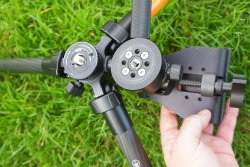
The KJI Reaper Grip gun rest consists of a tripod head that can be freely rotated 360° horizontally on a base plate. If required, the drag for the horizontal rotation can be increased using a screw with a nylon knob attached to the side of the tripod head. There is a quick lock to safeky lock the KJI Reaper Grip in the horizontal position. This locking mechanism is located opposite the adjusting knob and works with a spring-loaded locking pin that engages in one of four holes arranged at 90° intervals. This type of locking should also be used when the head is screwed onto the tripod in order to protect the nylon knob and the swivel head. The locking pin has a knurled nylon knob. To unlock the locking pin, simply pull it outwards and turn it slightly to park it in a notch. The tripod head can then be rotated freely on the base plate with the adjusting screw also loosened.
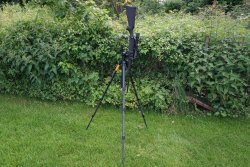
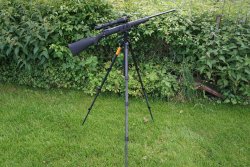
The tripod head of the KJI Reaper Grip is a milled aluminum part that looks very rugged and solid. At the top, it forms a hinge block that allows the gun clamped in the Reaper Grip to be tilted vertically by a total of around 115°. When tilted all the way downwards, the gun stands almost vertically with the muzzle pointing downwards in the tripod and when tilted all the way back, the barrel points upwards at an angle of around 15°. A control arm designed as a saddle clamp is located on the hinge joint. This can be used not only to control all movements of the Reaper Grip, but also to adjust the amount of force required for vertical movements. The control arm is reverse threaded, which is unusual. This means that in order to increase the clamping effect, the hunter must turn the lever anti-clockwise into the joint, as indicated by an arrow with the inscription "Tighten".
That's why you should definitely practise using the Reaper Grip dry before you take it to the hunting ground or the shooting range. By the way, light rifles can be moved easily and comfortably, but even heavy gun/optic set-ups do not change their angle of inclination unintentionally on their own.
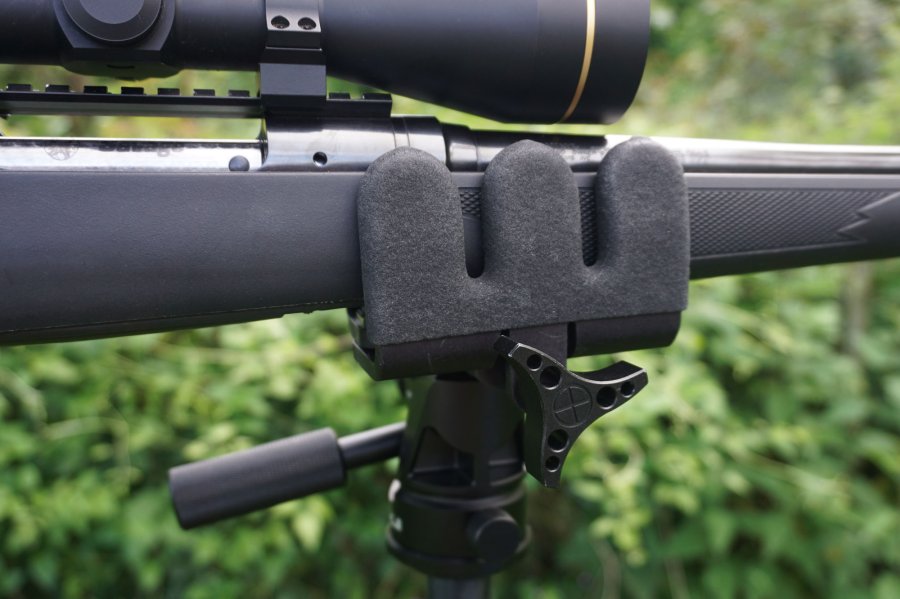
The centerpiece of the KJI Reaper Grip is a claw that clamps the gun to the fore-end from both sides like a vice. The jaws of this vice are reminiscent of claw combs, each with three rubber-padded fingers. The rubber padding has a rough and very grippy texture that holds even fine wooden or lacquered stocks securely without causing any damage. A smooth elastomer insert on the base plate of the grip provides the necessary protection for the stock from below. A sufficiently large screw with a three-star knob made of robust aluminum is used for clamping adjustment. The base plate itself is held on the grip's control handle assembly by four strong countersunk screws and can be rotated 180° for left-handed shooters if required. All you have to do is remove the four screws and screw them back in after repositioning the plate.
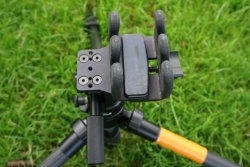
The height of the gun rest itself is around 116 mm above the base plate of the tripod being used. Rifles with a stock or chassis width of 40 to 71 mm can be clamped in the Reaper Grip's mount. The 71 mm is the dimension for the stock underside, but the clamping jaws are only 64 mm apart at the top. Should the rubber padding on the retaining combs become worn, these protective sleeves can be easily replaced by simply pulling them over the claws like gloves. In addition to the aforementioned nylon knob on the locking pin for the tripod head, KJI only uses one other plastic part on the entire Reaper Grip. This is the knurled knob which acts as a dowel pin cover thas has no other function and only needs to be removed for cleaning. KJI has therefore opted for a design that is largely based on robust and durable metal parts. However, this is also reflected in the weight of the 174-mm long, 153-mm wide and 163-mm high Reaper Grip, which weighed a whopping 1,155 grams on the test sample. The Reaper Grip System is designed for 3/8"-16 tripod threaded studs – but KJI also supplies an adapter for 1/4"-20 treaded studs.
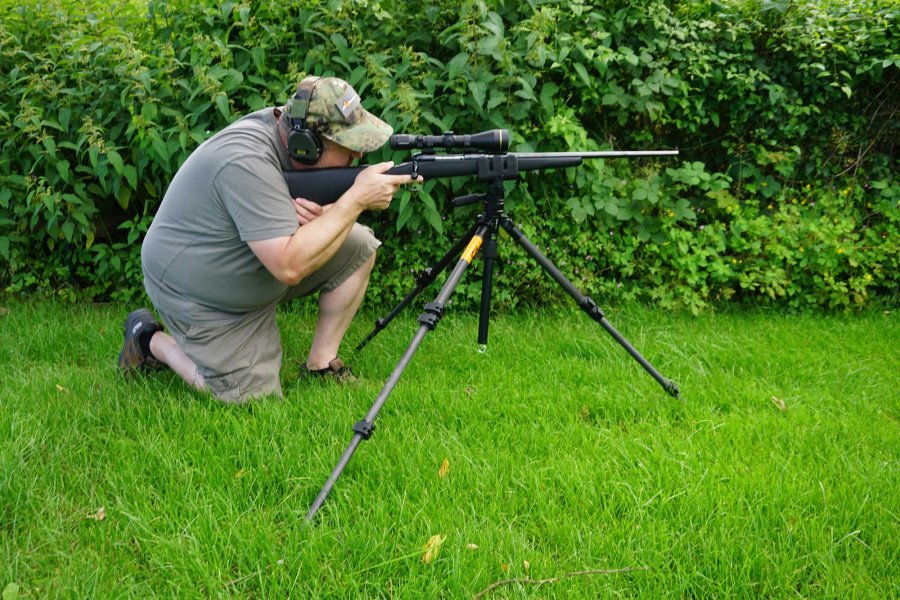
Our review of the KJI K800 CF Tripod and KJI Reaper Grip Kit
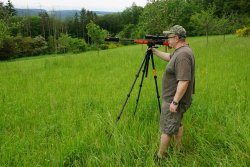
In our test, the KJI Reaper Grip proved to be the ideal complement to the ultra-light KJI K800 CF. Combined with the sturdy rifle tripod with clamp mount, the combination available in the kit weighs significantly less than 3 kilos. This makes the combination from KJI particularly suitable for use on driven hunts lasting several hours, where the hunter is assigned a fixed position. During such hunts, the guns cannot be kept permanently in the ready position due to possible exhaustion. In practice, this means that the rifle is often leant against the nearest tree or placed on the rucksack and you wait for the game to approach. Let's be honest: it is always better to use a tripod on which the rifle is already roughly positioned in the direction from which the game is expected to come. In our practical test, the KJI 800 in conjunction with the Reaper Grip fulfilled all requirements in terms of a stable and wobble-free gun rest, which can also be turned very quickly in the direction of fire. Only the anti-clockwise locking lever on the Reaper Grip for vertical gun alignment requires some getting used to and practice, so that in the heat of the hunt you don't end up with a home-made complication in the truest sense of the word, because you inadvertently make the subjectively too stiff hinge even more stiff or even block it. If you always make the right adjustment when setting up the tripod, this can be easily avoided. Thanks to the quick-release flip locks on the legs, these did not cause any problems either when setting up and adjusting the tripod or when retracting it later. Even when quickly moving the tripod in the area of the assigned stand, the legs could be quickly positioned in such a way that a secure and stable aim could be found again, even on sloping and uneven terrain. All in all, the recommended retail prices of just under 480 euros for both the KJI Reaper Grip and the KJI K800 CF seem fairly calculated. If you want to buy both parts, you should definitely go for the kit offer for €749 (RRP), which saves you almost €180.
And one last comment on the price level: If you think that the prices mentioned here are expensive, you should take a look at the current prices of premium manufacturers of photo and video tripods for carbon tripods and high-quality tripod heads for comparison – much higher prices are being asked for similar tripod designs.
Further information on the KJI K800 CF, the Reaper Grip and other KJI products can also be found on the KJI EU website.



